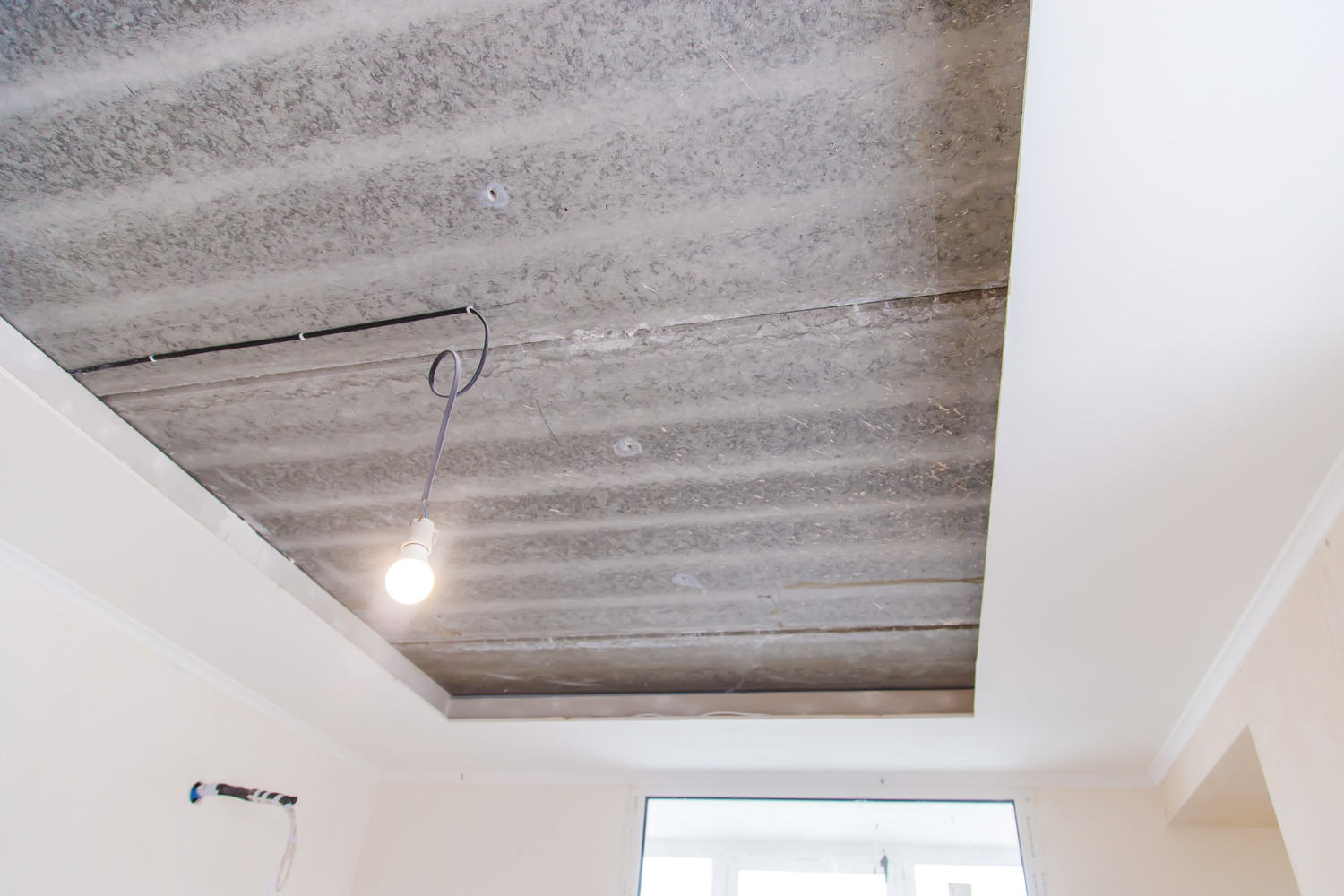Noticing strange black spots on your ceiling during a warm Maryland summer? You’re not alone. These spots can pop up in bathrooms, kitchens, and even bedrooms, especially when humidity is high. Many homeowners shrug them off thinking it’s just dust or dirt, but they’re often signs of something more serious: moisture that’s sitting in places it doesn’t belong. And when that moisture lingers, it can lead to mold or mildew, which makes the spots grow darker, smell musty, and spread over time.
Black spots aren’t just an eyesore. They might be small at first, but they can signal a bigger problem waiting to happen. If left untreated, they can stain ceilings permanently or damage the paint and drywall. Worse, they can become a health hazard over time, especially in older homes where air circulation isn’t great. Maryland summers are well known for being hot and sticky, which adds even more stress on indoor spaces that don’t dry out fast. Ceiling spots are something to take seriously and deal with carefully.
The black blotches or patches that appear on your ceiling are usually connected to too much moisture in the air. This happens a lot during the summer when warmer temperatures and high humidity levels combine to create damp indoor spaces. That sticky air hangs around longer than it should, especially in places that don’t get much airflow.
Here are the most common reasons why you might be seeing black spots on your ceiling:
– High humidity: Maryland summers can cause indoor air to feel damp, especially in bathrooms, laundry rooms, and tight hallways. If that moisture doesn’t evaporate quickly, it grabs onto ceilings and walls.
– Poor ventilation: Bathrooms without a working exhaust fan or closed windows trap steam inside, creating the perfect setup for mildew. Even showers that run just a few minutes can raise the moisture levels enough to cause problems.
– Mold or mildew growth: If there’s been a leak or if water collected from daily steam isn’t wiped up properly, mold can start growing and show up as black streaks or dots across the ceiling. These stains aren’t always flat either. Sometimes they look a little fuzzy or feel sticky when touched.
– HVAC issues: If air conditioning systems don’t run well or vents are blocked, cooled air can mix with warm moisture in the home, leading to condensation. That blend of cool and warm air collecting in one spot can leave wet marks and encourage mold growth.
Even something as small as drying clothes indoors or leaving wet towels piled up can boost humidity to unsafe levels. It adds up slowly, and soon you’ve created an environment where moisture feels welcome. We often see this issue in second-floor bathrooms where the exhaust fan is cracked or broken. The space may look clean, but tiny black spots keep creeping along the ceiling line. Usually, it’s just steam from daily showers rising with nowhere to escape.
Besides being ugly and frustrating, black ceiling spots can lead to health problems if ignored. That’s because they’re usually caused by mold or mildew, which can make people in the home feel worse. During summer, windows often stay shut to keep the AC going, meaning indoor air doesn’t always move around the way it should.
Here’s how black spots can affect your health:
– Trigger allergies: People with seasonal allergies may feel symptoms get worse indoors once mold shows up. Sneezing, itchy eyes, or throat irritation are some of the first signs to look out for.
– Breathing trouble: Those with asthma or other lung issues can feel more discomfort when exposed to mold. Even otherwise healthy folks can notice chest tightness or coughing after spending time in a mold-affected room.
– Ongoing symptoms: Some people feel tired, get headaches, or feel off when exposed to mold over time. This is more likely if it’s in areas where people spend most of their time, like bedrooms or offices.
Ignoring the problem only gives mold more time to spread. It can start in one spot and move into nearby spaces or behind walls if nothing is done. If you want to protect your home and your health, dealing with the issue early is the way to go.
Getting rid of black ceiling spots isn’t only about wiping down the area. Real prevention starts with managing the conditions that let them grow in the first place. Maryland’s hot and humid summers can make things worse fast if you’re not prepared. A few ongoing habits and smart changes can stop spots from getting out of hand.
Here are some ways to stay on top of black ceiling spots:
– Hire deep cleaning professionals: Areas that collect moisture, like ceilings over showers or near washing machines, are tough to clean properly without the right tools. A trained crew can scrub deeper and reach buildup that a quick wipe won’t fix.
– Use dehumidifiers in damp areas: When the air inside your home stays too moist, a dehumidifier can help get things back under control. Places like bathrooms, basements, and small closed rooms benefit the most.
– Check and improve ventilation: Make sure fans in the bathroom work right. If yours is noisy or doesn’t pull air effectively, it might need replacing. In areas without fans, leave the door cracked or add simple ventilation panels to help fresh air move through.
– Watch for leaks: Look inside cabinets under sinks or near the tops of walls and windows. A small, slow leak can cause spots long before you hear the drip. Keep an eye out and fix leaks fast.
– Clean consistently: Rooms that get the most moisture build-up are often the ones that get ignored. A weekly wipe-down around steamy spots like vents, ceiling corners, and tile edges can help hold off mold, especially when paired with better air circulation.
Even minor daily habits matter. Leaving the door open after a shower, setting wet towels on a rack instead of the floor, and keeping air vents clear can fight the conditions mold thrives in. It’s easier to stay ahead when you’re building habits around keeping things dry and well-kept. But deeper issues usually need a professional approach to fully resolve.
Maryland’s summer weather means long periods of heavy heat and humidity. That mix puts homes here at a higher risk of issues like mold, mildew, and moisture damage. Even if a house feels clean, the places mold likes to hide are often out of reach for regular household cleaning tools.
That’s where professional deep cleaning comes in. It’s meant for those spots that stay damp longer than they should. These include ceilings, high cabinets, vent edges, or deep grout in older tiled rooms. In homes with poor airflow or aging materials, surface wiping isn’t enough to stop deeper stains from forming. Mold spores can get into wall cracks or behind light fixtures, growing quietly and spreading slowly over time.
A professional cleaning service doesn’t just wipe down what you can see. It digs out buildup, fights odors, and helps prevent problems from getting worse. Deep cleaning also uncovers spots that might be showing early signs of water damage or rot. Catching these things sooner helps protect your walls, fixtures, and the air you breathe.
In Maryland homes, deep cleaning is about peace of mind. With summers being so moisture-heavy, scheduling a full clean before or during the hot season can help you stay ahead of mold before it becomes a bigger problem.
Black spots on the ceiling aren’t something to ignore. They often mean your home is holding too much extra moisture and doesn’t have enough airflow to dry things out. Whether the spots show up as a few tiny specks or a large patch near your shower, they usually signal larger moisture issues lurking below the surface.
The best way to stay ahead of these problems is to be proactive. Check on things regularly, don’t overlook small leaks or steam buildup, and add tools like dehumidifiers or better fans where needed. But most of all, call in cleaners who know how to handle moisture-prone homes across Maryland. With the right help and habits in place, your ceiling will stay clean, and your space will feel fresher and healthier all season long.
To keep your ceilings clean and your home feeling fresh during Maryland’s humid summers, staying ahead of moisture buildup is key. Using dehumidifiers and improving airflow can help, but for more stubborn issues, it’s smart to call in professionals. At Laly’s Cleaning Services, we offer detailed deep cleaning in Maryland to eliminate mold, mildew, and hidden buildup that regular cleaning often misses. We’re here to make your space healthier and easier to enjoy all season long.

